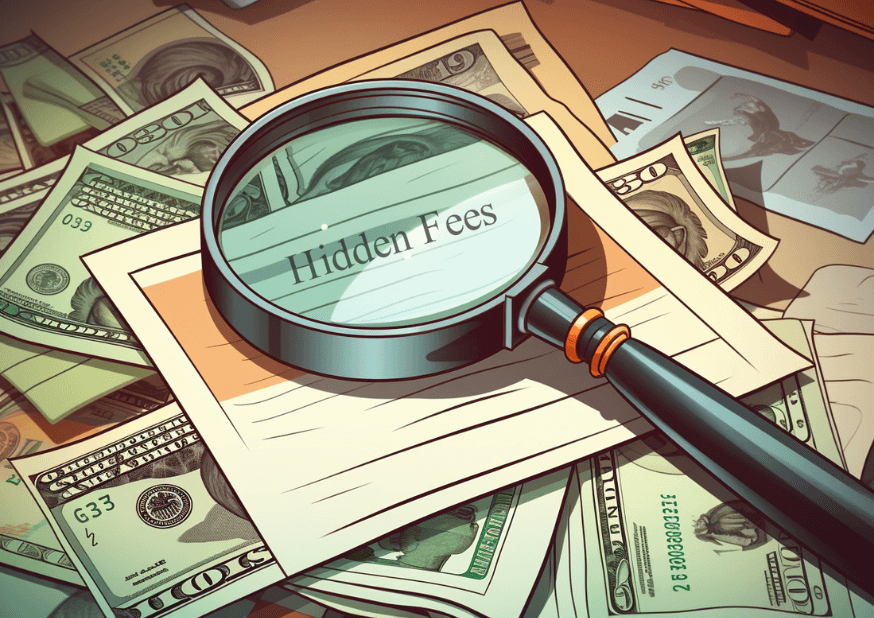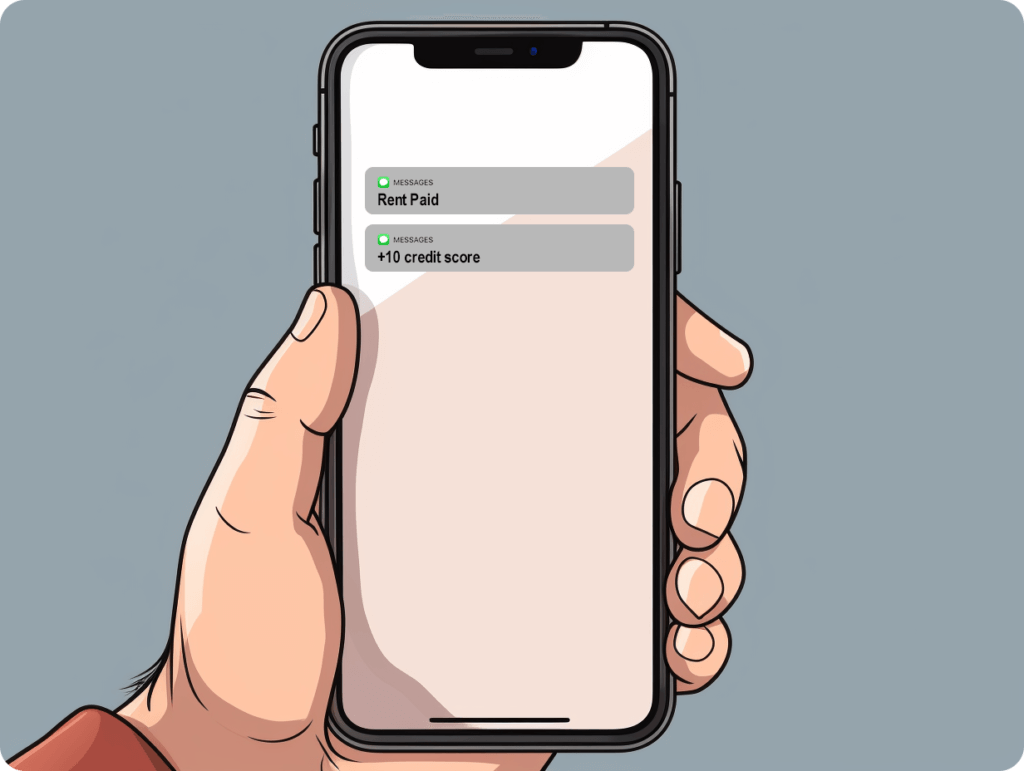- Blogs
- /
- How Long Are Money Orders Good For?
How Long Are Money Orders Good For?

Summary
Find out the validity and expiry of money orders. Learn the answer to “How long are money orders good for?” and what to do if they expire.
Did you know millions of money orders are issued yearly in the United States alone? These convenient payment instruments offer a secure way to transfer funds. Money orders are best for those who do not have access to traditional banking services.
However, it’s crucial to understand the validity period of money orders. This is so you can avoid any complications or inconveniences during transactions.
This comprehensive guide will investigate how long money orders are suitable for. We will explore the importance of understanding expiration dates and what happens if a money order exceeds its validity period. This helpful information on filling out a money order ensures a smooth experience.
So, if you’ve ever wondered about the lifespan of a money order or want to ensure that your financial transactions go off without a hitch, keep reading!
Key Takeaways
- Money orders are secure alternatives to cash or personal checks. They are commonly used for payments when other methods are not accepted. They are helpful for transactions where cash or checks are not accepted and provide security for larger amounts.
- Money orders are widely accessible at banks, post offices, and retail stores.
- Purchasing a money order involves providing the desired amount and paying an issuing fee.
- Money orders have a specific validity period printed—cash or deposit within this period to avoid expiration.
- You may be unable to cash expired money orders, but they are refundable based on issuer policies.
- For lost, stolen, or damaged money orders, promptly contacting the issuer may allow for a replacement or refund.
- Costs and fees vary among financial institutions issuing money orders. There are limits on amounts sent per transaction.
- Money orders differ from personal and cashier checks regarding security, accessibility, and issuer reliability. You should understand validity periods, authenticity, and issuer policies.
- Wire transfers and ACH payments provide electronic alternatives but might involve higher fees.
What are Money Orders?

Money orders serve as a secure alternative to cash or personal checks. Its holders commonly use them to make payments when institutions don’t accept other forms of payment.
Money orders can come in handy if you need to pay rent, send money to a friend, or buy an individual or business that doesn’t accept personal checks. You can purchase money orders at various locations, such as banks, post offices, and retail stores.
Buying Process
Purchasing a money order is a straightforward process. All you need to do is provide the desired amount of money and pay the issuing fee. The issuing price varies depending on where you buy the money order from.
Once you’ve completed the transaction, you will receive two essential items: a receipt and the money order. It’s crucial to hold onto the receipt as proof of purchase in case any issues arise during the transaction.
Filling Out
When it comes time to fill out a money order, you’ll need to provide three main pieces of information. These include the recipient’s name, your name (as the purchaser), and your signature.
Make sure to write legibly and double-check that all information is accurate before submitting the money order. Inaccurate or incomplete information can lead to delays or complications with payment processing.
Here’s a step-by-step guide on how to fill out a money order:
1. Write the recipient’s name: On the “Pay To” or “Payee” line, write the full name of the person or business receiving the funds.
2. Fill in your name: On the “From” or “Purchaser” lines, write your full name as it appears on your identification document.
3. Sign where indicated: Most money orders have a designated space for your signature. Sign your name in the provided area.
4. Keep the receipt: As mentioned earlier, keeping the receipt for your records is crucial. It will serve as proof of purchase and can be helpful if any issues arise during the payment process.
Remember, each money order is unique and may have different instructions or sections to fill out. It’s always a good idea to read the instructions that come with your specific money order to ensure you’re filling it out correctly.
Validity and Expiry Insights
Money orders are a secure payment form to send funds to individuals or businesses. But, it’s crucial to understand the validity period of a money order to ensure it can be cashed or deposited without any issues. Let’s explore some key insights about the validity and expiry of money orders.
1. Identifying Validity Period
Money orders have a specific validity period during which they can be cashed or deposited. This period is usually printed on the money order, making it easy to identify. It’s crucial to take note of this validity period and act accordingly.
To avoid expiration, cash or deposit the money order within the specified timeframe. If you wait too long, the money order may become invalid, and you won’t be able to access the funds. So, check the expiration date before proceeding with any money order transactions.
2. Handling Old or Expired Orders
If a money order has expired, unfortunately, it cannot be cashed or deposited anymore. But, options might still be available for handling old or expired money orders. Some issuers may allow you to request a refund for an expired money order.
To navigate this situation, contact the issuer and inquire about their policies on expired money orders. They will guide you on how to proceed and whether a refund is possible. Remember that each issuer has different procedures. Reaching out for accurate information is crucial.
3. Replacement of Lost, Stolen, or Damaged Orders
In unfortunate circumstances where a money order is lost, stolen, or damaged before you can use it, don’t worry! There might still be hope for getting your funds back. It may be possible to request a replacement for such cases.
Replacing lost, stolen, or damaged money orders varies depending on the issuer. It is essential to report any lost or stolen money orders to the issuer as soon as possible to start the replacement process. They will guide you through the necessary steps and provide instructions on how to proceed with obtaining a replacement.
Remember to act fast when dealing with lost, stolen, or damaged money orders. The sooner you report the issue and follow the necessary procedures, the higher the chances of resolving the situation successfully.
Usage and Practicality

1. When and Why to Choose Money Orders
Money orders are convenient when cash or personal checks are not accepted. They provide a secure payment method, especially for transactions involving larger amounts.
For instance, a money order can be ideal if you need to pay your rent or utility bills but cannot use cash or electronic payments. A money order can also be handy if you want to buy something from an individual or business that does not accept electronic payments.
2. Pros and Cons Considered
Money orders offer security and peace of mind as they are prepaid and traceable. The issuer guarantees the funds once you purchase a money order.
With the ability to track the money order’s progress through its unique serial number, you can ensure it reaches its intended recipient. But you must note that money orders may involve fees. These fees vary depending on where you buy them from, so it’s vital to compare prices before deciding.
Furthermore, there may be limitations on the maximum amount that you can send via a money order. Different issuers have different limits, so it’s crucial to check with them beforehand if you plan on sending a large sum of money. Understanding these pros and cons will help determine whether money orders align with your payment needs.
3. Alternatives to Money Orders
While money orders are a reliable payment method for many situations, alternative payment methods exist. Cashier’s checks provide another secure option for larger transactions. They guarantee funds like money orders. Wire transfers allow you to send funds swiftly from one bank account to another electronically. But they usually involve higher fees compared to other methods.
Online payment platforms such as PayPal or Venmo offer convenience when paying individuals or businesses online. These platforms often have user-friendly interfaces that make transferring funds quick and easy. But, it’s essential to consider the transaction fees and any potential security risks associated with online platforms.
By exploring these alternatives, you can decide based on your specific requirements. Consider factors such as convenience, cost, and the level of security needed for your transaction.
Financial Aspects Unveiled
1. Determining Costs and Fees
Money orders can be a convenient way to send funds, but it’s essential to understand the costs involved. Different financial institutions may charge varying fees for issuing money orders. These fees can depend on the amount sent and the specific services requested. For example, expedited delivery or international money orders may incur additional charges. When considering whether to use a money order, it’s crucial to consider these costs.
2. Understanding Limits on Amounts
When using money orders, there are usually limits on the maximum amount that you can send per transaction. These limits vary depending on the issuer, such as banks or other financial institutions.
The maximum amount allowed for a money order transaction can range from a few hundred to several thousand dollars. Awareness of these limits is crucial so your transaction falls within an acceptable range. Knowing this information beforehand will help ensure a smooth and hassle-free experience.
3. Examining Refund Procedures
Sometimes, you may find an unused or uncashed money order you no longer need. Fortunately, some issuers allow refunds for such situations. You must submit a request form, the original money order, and a receipt to start the refund process.
It is crucial to carefully follow the refund procedures outlined by the issuer to receive your refund promptly. By adhering to their guidelines, you can avoid any delays or complications in getting your funds back.
Understanding these financial aspects of money orders is essential when deciding whether they suit your needs. You can make an informed decision by considering the costs and fees of obtaining money orders from different issuers.
Being aware of the limits on amounts sent via money orders ensures that you stay within acceptable boundaries and avoid potential issues during transactions.
Lastly, knowing the refund procedures offered by issuers can provide peace of mind if you find yourself with an unused or uncashed money order. Following the proper steps for a refund will help ensure a smooth process and the timely return of your funds.
Transactional Mechanics

Sending Domestic Orders Explained
Domestic money orders are a convenient and widely accepted transaction method within the same country. Whether you need to pay bills, send money to family or friends, or make purchases, domestic money orders can be easily used. Various institutions, including banks, businesses, and individuals, accept them.
You must understand the process to ensure a smooth and successful transaction when sending a domestic money order. First, you must buy a money order from an authorized issuer such as a bank or post office. You must provide the necessary information, including the recipient’s name and address. Once you’ve completed the purchase, you will receive a receipt or stub as proof of payment.
Next, you can deliver the money order to the intended recipient through mail or in person. It’s essential to ensure that it reaches its destination safely and securely. The recipient can then cash or deposit the money order at their convenience.
Cashing Locations and Methods
Cashing your money order is an essential step in accessing your funds. You can cash your money orders at various locations, such as banks, post offices, retail stores, and check-cashing services. But it’s crucial to note that different issuers could restrict where you can cash their money orders.
To cash your money order conveniently, consider visiting your bank if they offer this service. Most banks accept money orders issued by reputable institutions without any hassle. Post offices also provide cashing services for USPS (United States Postal Service) money orders.
Retail stores like grocery stores and convenience stores often offer cashing services for a fee. Yet, it’s wise to inquire beforehand about any limitations or costs associated with cashing your particular type of money order.
In addition to physical locations, some issuers may allow you to deposit the funds electronically. You can do this by using mobile banking apps or online platforms, making it even more convenient to access your money.
By familiarizing yourself with the available cashing locations and methods, you can choose the most suitable option for your needs. Remember to bring proper identification when cashing a money order to comply with verification requirements.
Safety Measures and Authenticity Checks
1. Recognizing Counterfeits
Counterfeit money orders can be a severe problem, leading to financial loss and legal consequences. Recognizing signs of fake money orders is essential to protect yourself from scams. By familiarizing yourself with the security features of legitimate money orders, you can avoid falling victim to fraudulent schemes. Always remember that verifying the authenticity of a money order before accepting it as payment is crucial.
2. Avoiding Scams
Scammers often use fake or stolen money orders to deceive unsuspecting individuals. Awareness of common scams involving money orders can help you avoid becoming a target. Stay vigilant when accepting or processing money orders from unfamiliar sources.
3. Tips for Secure Transactions
You must focus on securing your personal information and transactions when using money orders. Here are some tips to enhance your safety:
1. Keep receipts: Keep all receipts related to your money order transactions as proof of payment and for reference purposes.
2. Use reputable issuers: Choose well-established financial institutions or postal services—those known for issuing reliable and secure money orders.
3. Verify recipient details: Double-check the recipient’s name, address, and other relevant information before sending a money order.
4. Exercise caution with unfamiliar sources: Be especially careful when dealing with individuals or businesses you are not familiar with.
5. Report suspicious activity: If you encounter any suspicious behavior or believe you have received a counterfeit money order, report it immediately to the appropriate authorities.
By following these tips, you can minimize the risk of fraud or unauthorized use of money orders while ensuring secure transactions.
Comparisons and Differences

Money Orders vs. Checks
Money orders and personal checks have distinct characteristics and serve different purposes.
While you could use both for payments, money orders offer greater security and guaranteed funds. Unlike personal checks drawn from an individual’s bank account, money orders are prepaid instruments issued by a third party, such as a post office or a financial institution. This means that the funds for a money order are already collected at the time of purchase, making it a more secure form of payment.
One key difference between money orders and personal checks is that they do not need a bank account to get or cash them. This makes them an accessible option for individuals who do not have access to traditional banking services. Money orders often have lower fees than bounced check fees incurred with personal checks.
Understanding the differences between money orders and personal checks can help determine which option suits your needs. If you need to make a payment but want the assurance of guaranteed funds without requiring a bank account, a money order may be the better choice.
Cashier’s Checks Distinction
Cashier’s checks and money orders share similarities but also have some key differences. Cashiers’ checks are prepaid instruments like money orders issued directly by banks rather than third-party entities. Cashier’s checks typically have higher limits than money orders since the issuing bank backs them.
One advantage of using cashier’s checks over money orders is that they provide an added level of security. This can be particularly important when dealing with larger transactions or making payments to unfamiliar parties.
Additional fees may be associated with obtaining cashier’s checks compared to standard money order fees. However, these fees can vary depending on the bank and account type.
Knowing the distinctions between cashier’s checks and money orders can help you choose the appropriate payment method for your specific situation. If you require a higher limit and prefer the added security of a bank-issued instrument, a cashier’s check may be the better option.
Wire Transfers and ACH Alternatives
In addition to money orders, other electronic payment methods, such as wire transfers and Automated Clearing House (ACH) payments, are available. These alternatives provide convenient ways to transfer funds directly from one account to another.
You would typically use wire transfers for larger transactions requiring immediate funds transfer. They involve electronically sending money from one financial institution to another. At the same time, wire transfers offer speed and convenience but often incur higher fees than money orders or ACH payments.
Troubleshooting Common Issues
1. Dealing with Damaged Orders
If you find yourself with a damaged money order that is still legible, don’t worry! In most cases, some recipients still accept damaged money orders for cashing or depositing. However, some institutions may require additional verification or documentation to ensure validity.
To navigate this situation smoothly, contacting the issuer or the institution where you plan to cash the damaged money order is advisable. They will provide you with guidance on what steps to take next.
2. Lost Money Order Solutions
Losing a money order can be a stressful experience, but there are steps you can take to resolve the situation and protect your funds. First, you should report the loss promptly to the money order issuer. It could be a bank, post office, or any other entity that issued the money order.
By reporting the loss as soon as possible and providing any necessary documentation, such as proof of purchase or receipt, you initiate the process of obtaining a replacement or refund.
Following the appropriate procedures increases your chances of recovering your funds successfully. The issuer will guide you through their requirements for replacing a lost money order. It’s important to note that fees may be associated with getting a replacement money order, so be prepared for any potential charges.
If enough time has passed since purchasing the money order and it remains uncashed or unused by anyone else, there might be an option for reimbursement instead of replacement. It typically involves filling out forms and supporting documentation proving ownership and loss.
Remember that each institution may have policies regarding lost or stolen money orders. It’s crucial to contact them directly for accurate information and instructions explicitly tailored to your situation.
While dealing with damaged or lost money orders can be inconvenient and problematic, following these troubleshooting steps ensures that you’re taking proactive measures toward resolving these issues effectively. You increase the likelihood of recovering your funds or obtaining a replacement by promptly reporting a loss or contacting the issuer about a damaged money order.
Final Thought
So, there you have it! Money orders are a convenient and reliable way to make payments or send money securely. We’ve explored the money orders’ ins and outs, from their validity and expiry to their usage and practicality. We’ve also delved into the financial aspects, transactional mechanics, safety measures, comparisons, and troubleshooting common issues.
With this knowledge, you can confidently use money orders for your financial transactions. Whether you need to pay bills, send money to loved ones, or make purchases without using cash or checks, money orders can be a valuable tool in your financial arsenal. So try it – money orders are the perfect payment method.
FAQs
1. How long are money orders valid?
Money orders typically have a validity period ranging from one to three years. After this period, they may no longer be cashed or deposited. It’s crucial to check the expiration date on your money order and ensure you use it before it becomes invalid.
2. Can I still use an expired money order?
No, you cannot use a money order once it has expired. Financial institutions and businesses will not accept expired money orders. To avoid inconvenience, use your money order within its specified validity period.
3. What should I do if my money order expires?
If your money order has expired and you haven’t used it, you can request a refund from the issuer. Contact the money order provider and inquire about their process for obtaining a refund for an expired money order.
4. What happens if a money order expires?
If a money order expires, it doesn’t mean that the funds are lost forever. However, you may encounter difficulties when cash or depositing an expired money order. In such cases, you must contact the issuer (the organization that issued the money order) for further instructions. They may require you to request a refund or issue a new money order with updated dates.
5. How can I verify the authenticity of a money order?
To ensure the authenticity of a money order, examine it carefully. Look for security features such as watermarks, security threads, and unique designs. Contact the issuing institution to verify the document’s legitimacy before accepting or depositing it.
6. Can I extend the validity period of a money order?
No, you cannot extend or renew the validity period of a money order. Once it expires, it becomes void and cannot be used anymore. Therefore, use your money order within its designated timeframe to avoid inconveniences or complications.
7. Where can I cash my money order after it expires?
If your money order has expired and you still wish to access the funds, you can contact the issuing organization for guidance on how to proceed. They may require additional documentation or provide alternative methods for accessing your funds.
8. Can I get a refund if my money order expires?
While policies may differ among issuers, obtaining a refund for an expired money order is possible. You will need to follow the specific instructions provided by the issuer, which may include filling out a form and providing proof of purchase. Act promptly and contact the issuer when you realize your money order has expired.
Our Latest Blogs:
FREE Strategy Session to Fix Your Credit Blogs / Dealing with financial difficulties is overwhelming. But when faced with...

ThisIsJohnWilliams
FREE Strategy Session to Fix Your Credit Blogs / Facebook Twitter Linkedin Instagram Share Summary Banks allow customers to...

ThisIsJohnWilliams
FREE Strategy Session to Fix Your Credit Blogs / Facebook Twitter Linkedin Instagram Share Summary For most people, rent...

ThisIsJohnWilliams
FREE Strategy Session to Fix Your Credit Blogs / Facebook Twitter Linkedin Instagram Share Summary Ever wondered about the...

ThisIsJohnWilliams
FREE Strategy Session to Fix Your Credit Blogs / Facebook Twitter Linkedin Instagram Share Summary Have you ever gone...

ThisIsJohnWilliams
FREE Strategy Session to Fix Your Credit Blogs / Facebook Twitter Linkedin Instagram Share Summary Understanding the effects of...






